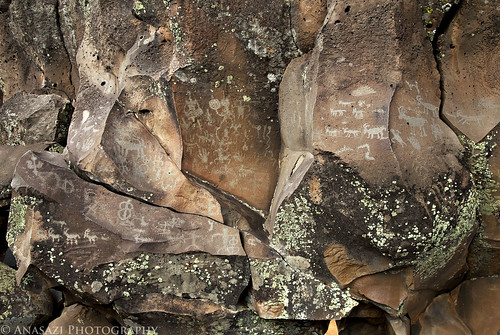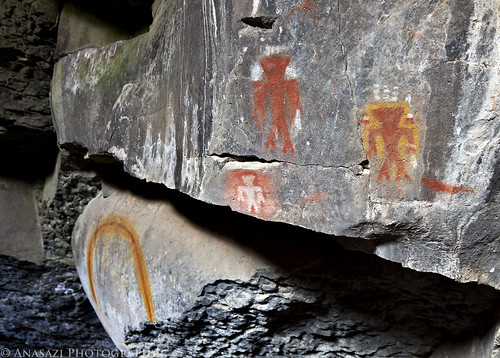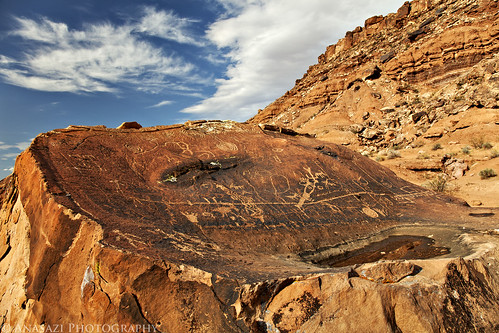After leaving Paiute Cave we found our way over to Nampaweap to explore the countless petroglyphs found all over the boulders and cliff faces in the area. Nampaweap means “foot canyon” in Paiute. This canyon may have been an important prehistoric travel corridor from the Grand Canyon to the resources of the ponderosa pine country around Mount Trumbull. This is also one of the largest known rock art sites on the Arizona Strip. This photo shows a typical scene found at Nampaweap. There are plenty of boulders, petroglyphs and lichen in the area. We found a lot of petroglyphs on our visit, but I’m sure we probably missed many of them, too. This site will definitely require another visit or two when I have the chance.
Three Colorful Anthropomorphs
After our visit to the Canaan Gap petroglyphs, we continued back down into Arizona again so that we could stop at a few more sites on our way to Toroweap. The next stop was to a collapsed lava tube known as Paiute Cave that contains a few very vibrant pictographs. Here are three anthropomorphs that are all painted different colors. Below them and to the left is a large painted rainbow. This was a very interesting site to visit, but difficult to photograph because of the low light and large loose boulders. A tripod was mandatory in the cave.
Boulder Top Petroglyphs
After spending some time at the Parowan Gap earlier in the day, we continued south to the Arizona Strip. Our next destination was to visit the petroglyphs on the boulders at the base of Little Black Mountain. This was one of the more unique panels at the site. It appears that this boulder contains a natural pothole that holds water which might be why it was an important place. The top of this boulder contained more petroglyphs than the others in the area. On a side note, this is the first rock art site I have visited in Arizona, which also means I have visited sites in all of the four corner states this year.


